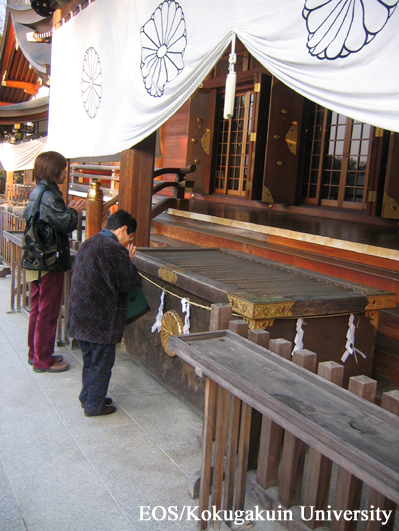- トップ
- Encyclopedia of Shinto
- Saisen
Encyclopedia of Shinto
| Main Menu: | |
| Links: |
詳細表示 (Complete Article)
| カテゴリー1: | 4. Jinja (Shrines) |
|---|---|
| カテゴリー2: | Offerings and Talismans |
| Title | Saisen |
| Text | A type of offering to kami and buddhas, originally given during visits made to express gratitude for the fulfillment of a prayer. Nowadays the term refers to a monetary gift offered as an expression of prayer or worship at temples and shrines. Differing from the offerings made at fixed rituals, saisen is typically offered by individuals on the occasion of irregular visits for the purpose of making personal entreaties to the kami. Historically these offerings consisted of rice scattered before the kami (sanmai), or a small amount of rice enclosed in a twisted paper, called ohineri. Metallic currency took the place of rice in the form of "tossed coin" (sansen) offerings following the shift to a currency-based economy from the late medieval period and as the practice of making pilgrimages (sankei) to distant temples and shrines grew in popularity. An entry from the Tenbun era (1532-1555) in the diary of the intendant (bettō) of the Tsurugaoka Hachiman Shrine notes that an "offering box for tossed coins" (sansenbako) was placed before the shrine. In the Edo period, "tossed coins" (sansen) was changed to "offering coins" (saisen). Such changes, however, were primarily an urban phenomenon, and the custom of offering rice continued for a long time at provincial temples and shrines. Since the change to cash money, these offerings have become a significant element of shrine economics, and the offerings at New Year's shrine visits (hatsumōde) alone amount to a considerable sum. — Suzuki Kentarō |






